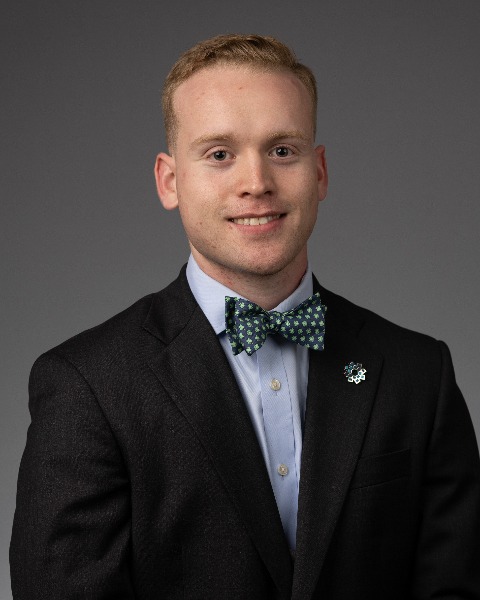Degenerative
Comparison of 5 Year Outcomes for Anterior Versus Posterior Approach for Cervical Spondylotic Myelopathy: A Retrospective Analysis
Friday, February 21, 2025

Geoffrey R. O'Malley, Jr., B.A.
Medical Student
Hackensack-Meridian School of Medicine
Chatham, New Jersey, United States
Presenting Author(s)
Introduction: Cervical spondylotic myelopathy (CSM) is a common degenerative condition of the spine. Surgical intervention is often necessary to prevent disease progression and improve neurological outcomes. Two primary approaches for CSM include anterior cervical discectomy and fusion (ACDF) and posterior cervical fusion (PCF). This study aims to compare the efficacy, complications, and patient outcomes between the anterior and posterior surgical approaches in patients treated for CSM.
Methods: A retrospective analysis of the quality outcomes database (QOD) following surgical intervention for CSM of a high volume private practice in the QOD Study Group was performed. Patient baseline characteristics, socioeconomic descriptors, and PROMs were collected after 12-month, 24-month, and 60-month periods following surgery. Satisfaction was measured using NASS Satisfaction. Satisfaction was defined as reporting NASS scores of 1 or 2.
Results: A total of 55 patients were included (ACDF n=39, PCF n=16). The PCF group had a higher prevalence of central stenosis at presentation (100% vs. 66.67% in the ACDF group, p=0.008). The ACDF group had a significantly higher BMI (29.39 ± 5.97 vs. 26.51 ± 3.70, p=0.03), with no other demographic variables showing any significant differences. A significantly greater percentage of patients in the PCF group had symptom duration of 3-12 months (43.8% vs. 12.8% in the ACDF group, p=0.012). Additionally, a greater percentage of ACDF patients had symptoms lasting over 12 months (66.7% vs. 43.8% in PCF, p=0.114), however, this was not statistically significant. No significant differences were observed in patient satisfaction scores between the two groups.
Conclusion : Both anterior cervical discectomy and fusion (ACDF) and posterior cervical fusion (PCF) provide similar long-term patient satisfaction in treating cervical spondylotic myelopathy (CSM). Despite differences in central stenosis prevalence, BMI, and symptom duration, these factors did not significantly affect satisfaction scores at 12, 24, or 60 months. These results suggest that both approaches are effective, with patient-specific factors potentially guiding surgical choice.
Methods: A retrospective analysis of the quality outcomes database (QOD) following surgical intervention for CSM of a high volume private practice in the QOD Study Group was performed. Patient baseline characteristics, socioeconomic descriptors, and PROMs were collected after 12-month, 24-month, and 60-month periods following surgery. Satisfaction was measured using NASS Satisfaction. Satisfaction was defined as reporting NASS scores of 1 or 2.
Results: A total of 55 patients were included (ACDF n=39, PCF n=16). The PCF group had a higher prevalence of central stenosis at presentation (100% vs. 66.67% in the ACDF group, p=0.008). The ACDF group had a significantly higher BMI (29.39 ± 5.97 vs. 26.51 ± 3.70, p=0.03), with no other demographic variables showing any significant differences. A significantly greater percentage of patients in the PCF group had symptom duration of 3-12 months (43.8% vs. 12.8% in the ACDF group, p=0.012). Additionally, a greater percentage of ACDF patients had symptoms lasting over 12 months (66.7% vs. 43.8% in PCF, p=0.114), however, this was not statistically significant. No significant differences were observed in patient satisfaction scores between the two groups.
Conclusion : Both anterior cervical discectomy and fusion (ACDF) and posterior cervical fusion (PCF) provide similar long-term patient satisfaction in treating cervical spondylotic myelopathy (CSM). Despite differences in central stenosis prevalence, BMI, and symptom duration, these factors did not significantly affect satisfaction scores at 12, 24, or 60 months. These results suggest that both approaches are effective, with patient-specific factors potentially guiding surgical choice.

.jpg)